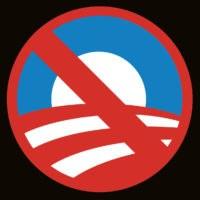To make it in America, you have to hustle. Fast-food worker or CEO, Uber driver or student, you have to stay connected in an economy built on the assumption that anyone is always reachable anywhere. In 2017, that means you need a smartphone.
When Apple released the iPhone in 2007, the world understood it as a gadget, a novelty, a cool thing you plunked down a handful of cash for if you were lucky enough to have the money. Then you just needed to figure out what to do with it. At first the answer was: play games and take pictures of things, text and talk. A decade later, the smartphone has become the lifeblood of social interaction and upward mobility. People from every economic stratum use them to stay in contact. What’s more, smartphones have become the engine of the gig economy, which today employs about one in three American workers.
The choice between health care and a smartphone is no choice at all.
All of which makes the false equivalence Utah representative Jason Chaffetz drew today the more maddening. “Rather than getting that new iPhone that they just love and want to go spend hundreds of dollars on that, maybe they should invest in their own health care,” Chaffetz said on CNN by way of defending the House of Representative’s new health care bill. Chaffetz either doesn’t realize or refuses to acknowledge that in the 21st century, the choice between health care and a smartphone is no choice at all.
The vast majority of Americans use the internet every day—88 percent according to the Pew Research Center. In 2016, three quarters of all Americans owned a smartphone, with lower-income people and people over the age of 50 accounting for much of the most recent growth. Last year, the United Nations Human Rights Council declared that the internet was a basic human right. People without access to the internet—some 60 million Americans and billions more around the world—face a substantial disadvantage.
“I can show you young students who do their homework on smartphones in the parking lots of McDonalds. I can show you grandmas who haven’t talked to their grandkids in years, because they don’t have the internet,” says Chike Aguh, CEO of the nonprofit EveryoneOn, which works to close the digital divide by getting everyone online. Just having the internet at home improves a child’s chances of graduating from high school, Aguh says. “If you misunderstand that you misunderstand and trivialize a really big barrier to economic mobility and a source of economic inequality in this country.”
For people with the least money, the smartphone takes on even greater importance. If you can’t afford a computer or an at-home broadband connection, the smartphone becomes your primary way of getting online. You can apply for jobs via your phone, arrange childcare, or trade shifts with your co-workers. For homeless people who use the internet to find beds at shelters or apply for jobs, a smartphone could be a literal lifesaver.
Related Stories
And, contra Chaffetz, a lifesaver that costs at least an order of magnitude less than the kind that covers your doctors’ bills. You can get a free smartphone from Verizon and pay $35 monthly for access, or a little more than $420 per year. If you can’t afford a monthly bill, you can buy a smartphone for less than $100 and rely on free Wi-fi hotspots to use it. By contrast, the average health care spending per person in America rose to nearly $9,990 in 2015, according to the Centers for Medicare and Medicaid. Cutting out a smartphone and its bill won’t suddenly give most Americans the ability to afford a monthly health insurance premium.
Ironically, access to the internet can actually have positive effects on people’s health. In 2014, the FCC and the University of Mississippi gave people suffering from chronic diabetes access to a mobile internet device that tracked their blood sugar. In just the first six months, the 85 people in the test program went to the hospital less and had gained more control over their disease. And the hospital had saved $339,184 in ER visits, according to Aguh, who can recite that number by heart. Elsewhere, cancer patients use mobile phones to manage their disease—an inexpensive way to start closing the gap in care between wealthy patients and everyone else.
Far from being an indulgence, a smartphone could make health care more affordable to everyone, not less. Claiming that one is a necessity and the other a luxury doesn’t just defy the realities of what it takes to participate in the US economy—it displays a willful lack of imagination to recognize the power of technology to make Americans’ lives better.


